1. Testing and assessing
Screeds
Screeds form the load-distribution layer. They are usually installed on top of concrete floors. When produced as in-situ screeds, they are made from aggregates (gravel, sand etc.) and suitable binders. Dry screeds, by contrast, consist of prefabricated elements.
Screeds are produced with a finer aggregate than used for concrete. That’s why they have a smoother and more even surface. Screeds are also considerably thinner and less compact than concrete floors. As a result, they are more porous and dry out faster.
Screeds must fulfill a variety of tasks:
- Level out the uneven surface of bare concrete floors
- Provide a solid, bend-proof subfloor ready to receive floor coverings
- Protect the thermal and acoustic insulation underneath
- Distribute the loads to a larger surface area
- As a thermal mass: Contribute to a better indoor climate
- As heated screeds: Provide indoor heating
In order for screeds to fulfill these very diverse tasks, the industry has developed different types of screed that are particularly well suited to meet the respective requirements.
These types of screed differ not only with respect to their construction, but also regarding the binding agent used.
Bonded screeds
Bonded screeds are in-situ screeds, i.e. they are produced on site. They are primarily used for industrial buildings and cast directly on the floor slab or on the concrete base. They are most often used in places where neither ground moisture nor thermal or acoustic insulation play an important role, but where high loads are to be expected.
Typical of bonded screeds is their direct connection to the concrete floor. This is achieved by applying cement slurry or another suitable adhesion promote
The problem with this composite structure is that moisture from the bare concrete floor can directly penetrate into the screed. Due care must therefore be taken when planning to install moisture-sensitive coverings (e.g. parquet) or vapor-impermeable materials (e.g. PVC) on this type of screed.
In these cases, it is often necessary to apply a moisture barrier or dampproof course made of reaction resin (e.g. Thomsit R 755 Epoxy Safety Primer).
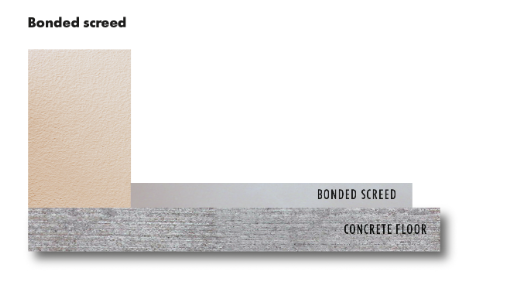
Screeds installed on a separation layer
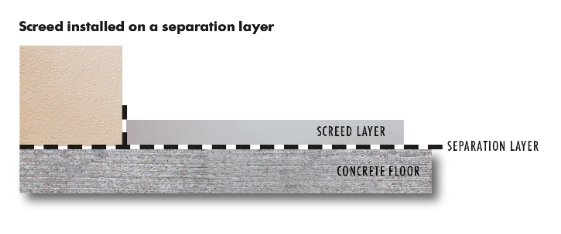
Screeds installed on a separation layer are also in-situ screeds. They differ from bonded screeds only in that they have a separation layer installed on the bare concrete floor. This layer can consist of plastic sheeting, bitumen sheeting or similar materials. If the separating layer is not designed as a barrier against ground moisture, the same applies as already described for bonded screeds: moisture can rise through the screed into the floor coverings.
Screeds on a separation layer are installed where thermal and acoustic insulation plays a minor role and where floors are expected to withstand higher loads. Examples of this are DIY stores and production halls.
Floating screeds
Floating screeds can either be in-situ screeds or consist of prefabricated screed elements. Here, the load-distribution layer is installed on insulation materials like polystyrene, polyurethane or mineral wool slabs that provide thermal and impact sound insulation. Depending on the choice of material, the construction may either offer higher thermal or higher sound insulation. Since these two insulation effects counteract each other, there are physical limits to what is feasible. Furthermore, care must be taken not to reduce the load-bearing strength of the surface. A higher level of sound insulation, for instance, requires the installation of softer insulation materials.
In these cases, it is necessary to increase the screed layer thickness. This, in turn, will affect the drying time: thicker screeds dry much more slowly. The plastic sheeting covering the concrete floor should be able to block moisture. Otherwise, there is again the risk of rising damp (see information on bonded screeds).
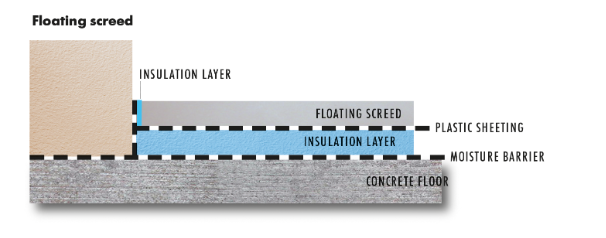
Type A
System with heating pipes inside the screed
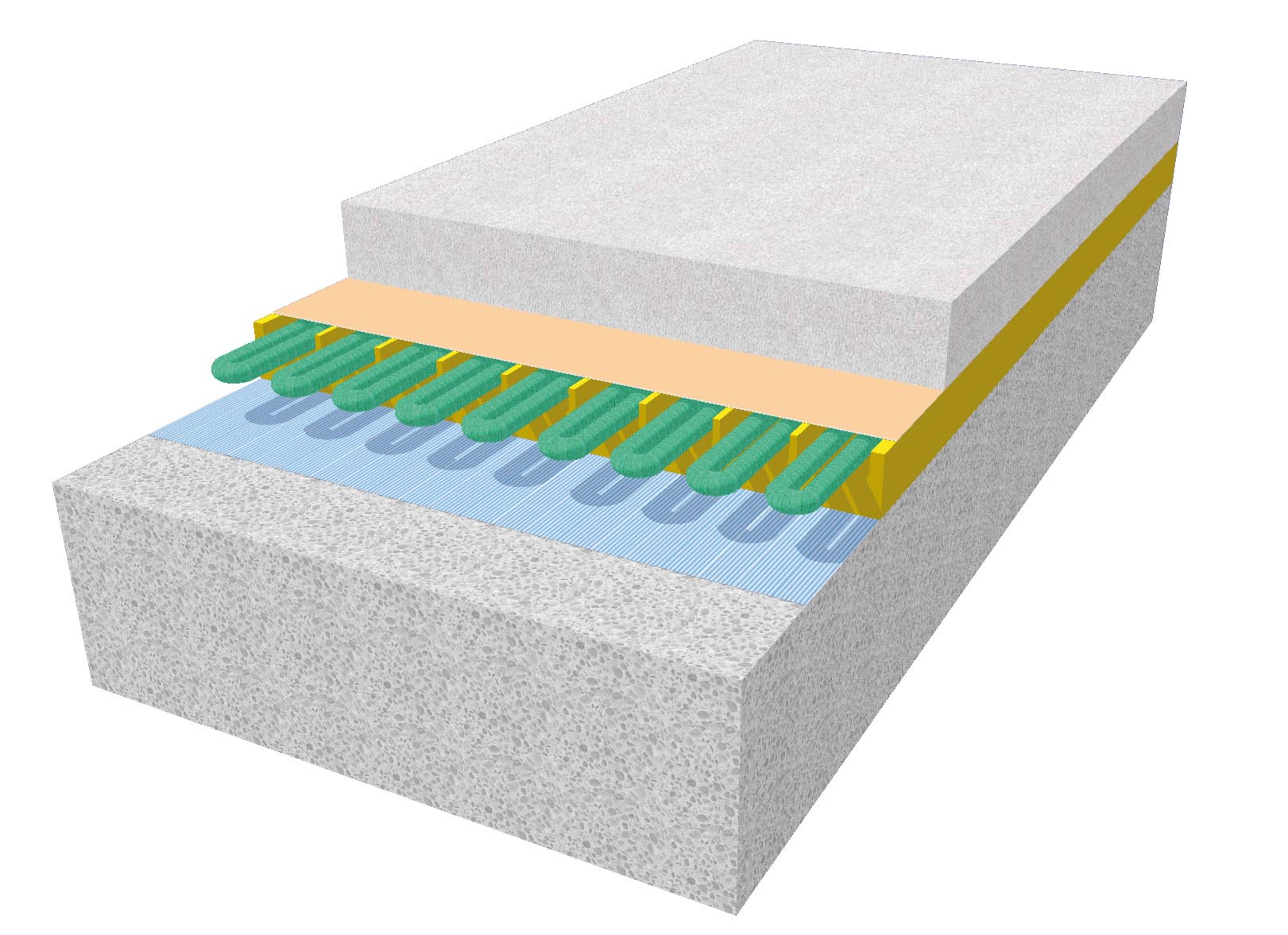
Type B
System with heating pipes underneath the screed
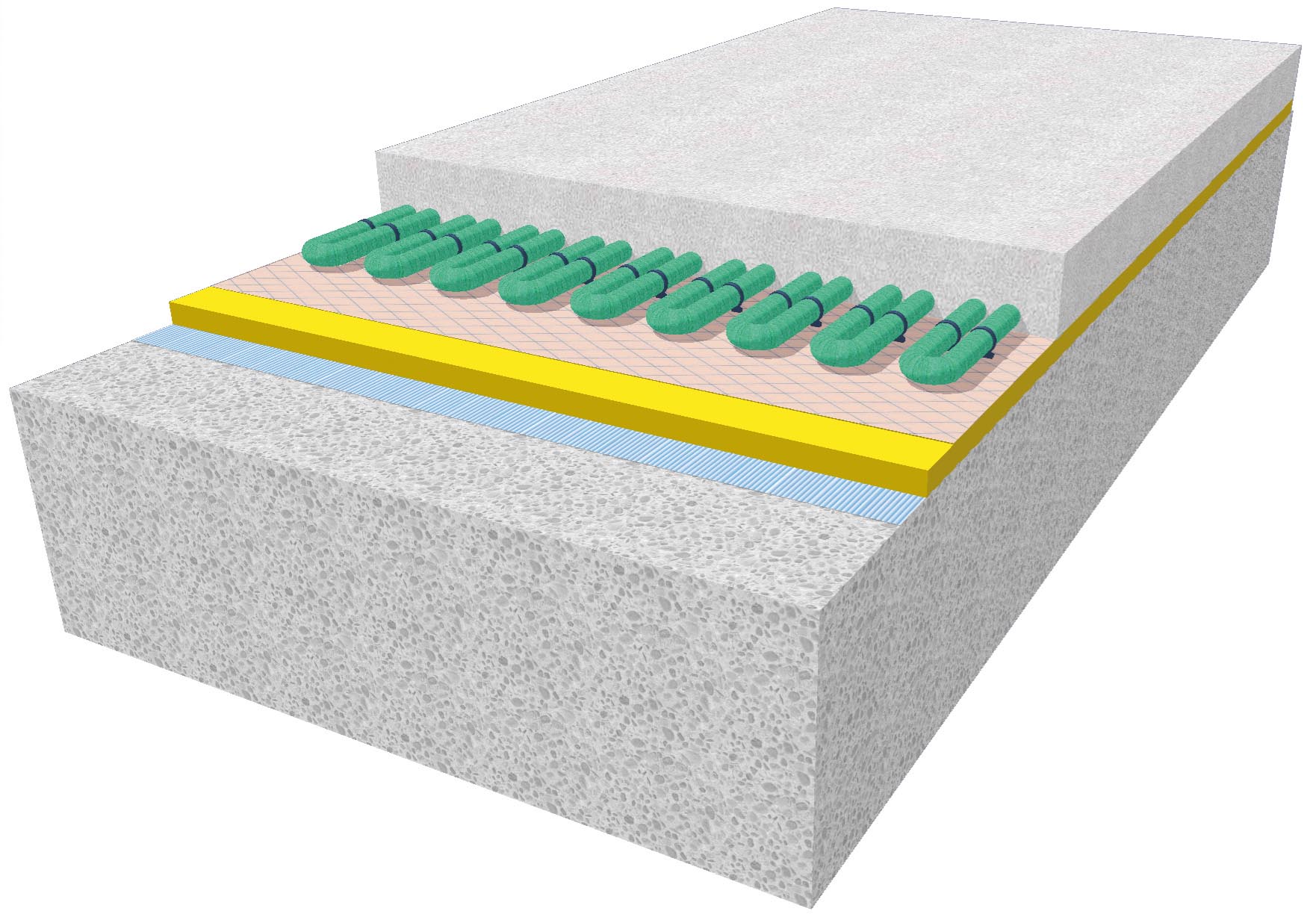
Type C
System with heating pipes inside the levelling screed to which the screed is applied with a two-layer separation layer
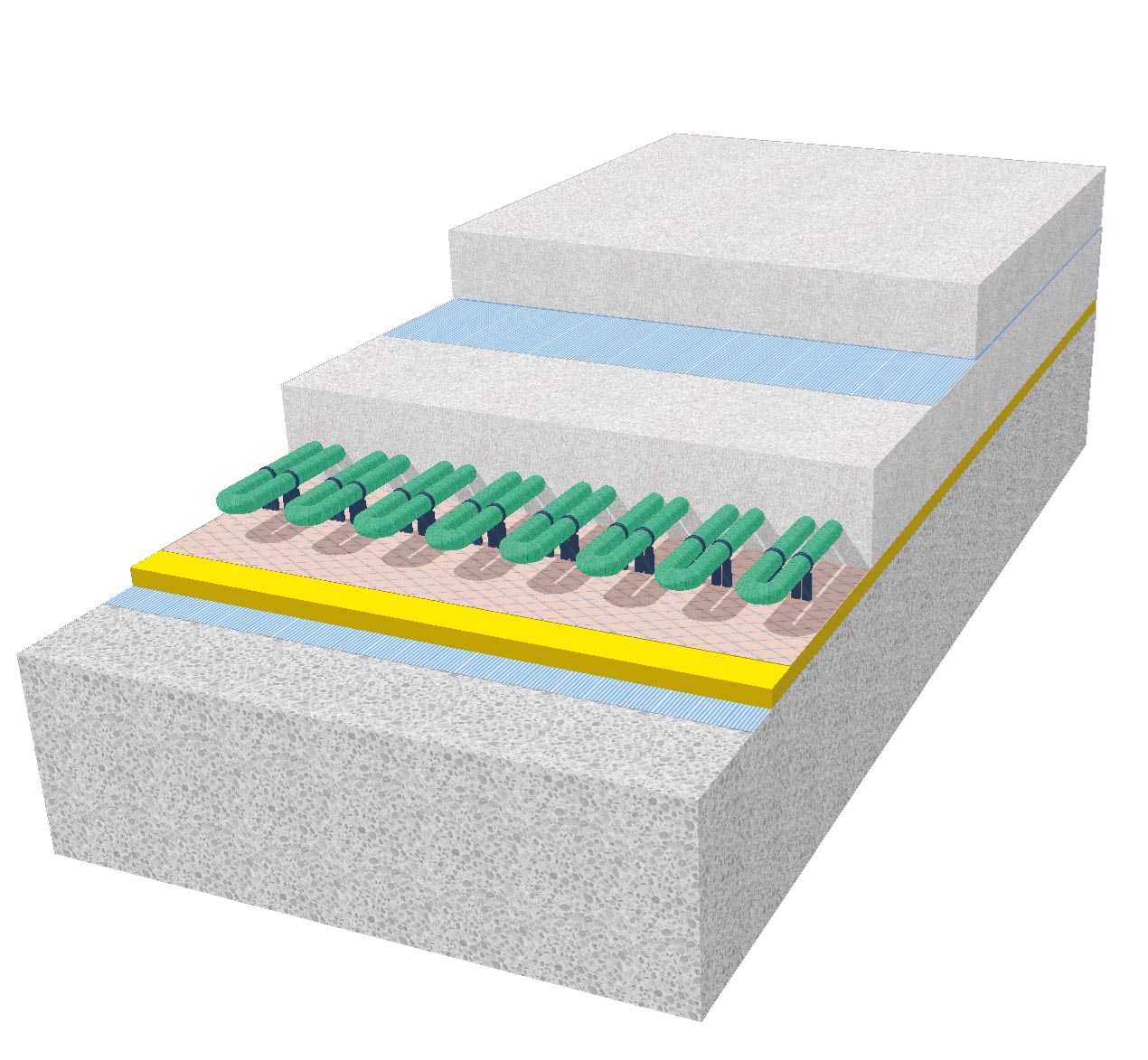
If all parameters have been duly taken into account, the subfloors can be further treated and prepared. However, the suitability of the products intended for use should be checked by consulting the respective Technical Data Sheets and/or the manufacturer.
The information given here can only be of a very general nature.
Screed classification based on type of binding agent
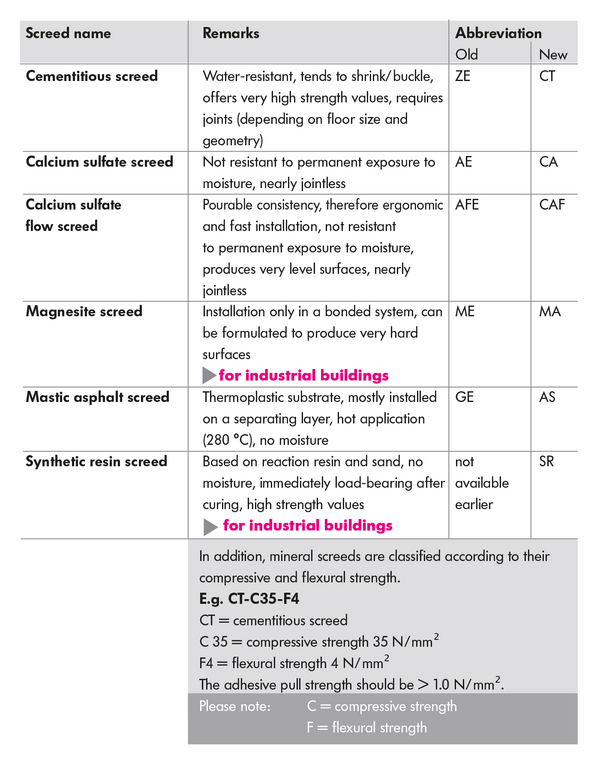
Old subfloors
Old subfloors make high demands on the expertise and experience of the professional floorer. Not only is it often difficult to identify the type of subfloor, but also to assess whether it is fit for the intended use. Unfortunately, there is not always a suitable test method that is able to deliver reliable results for old floors. For instance, not every type of asphalt is suitable for receiving parquet or other floor coverings.
Mistakes in the assessment of old subfloors can result in costly customer complaints. This happens, for example, when mixing up rolled asphalt with mastic asphalt or magnesite screed (that was painted grey) with conventional cement screed.
Old boarded floor
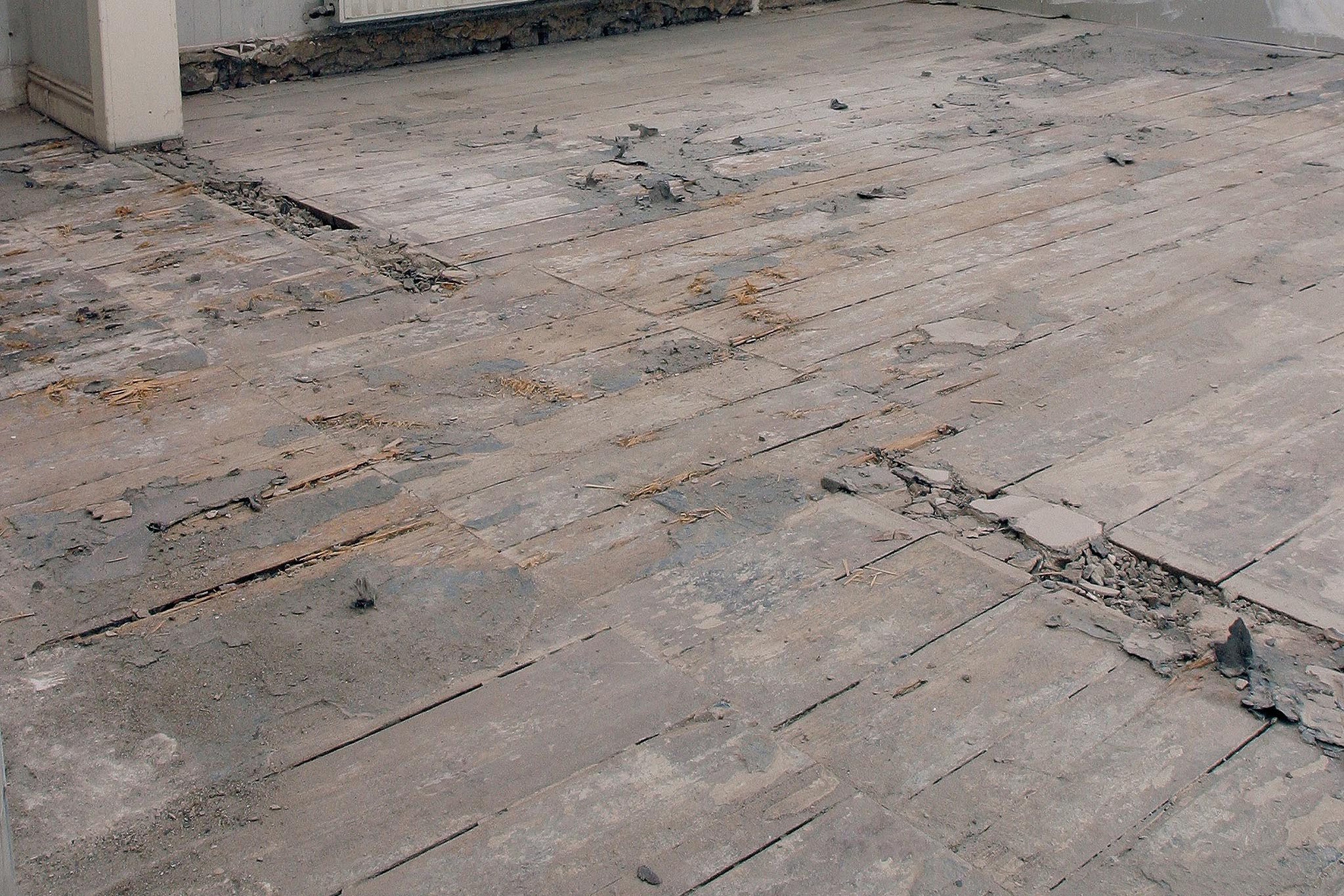
Residues of old floor installation products
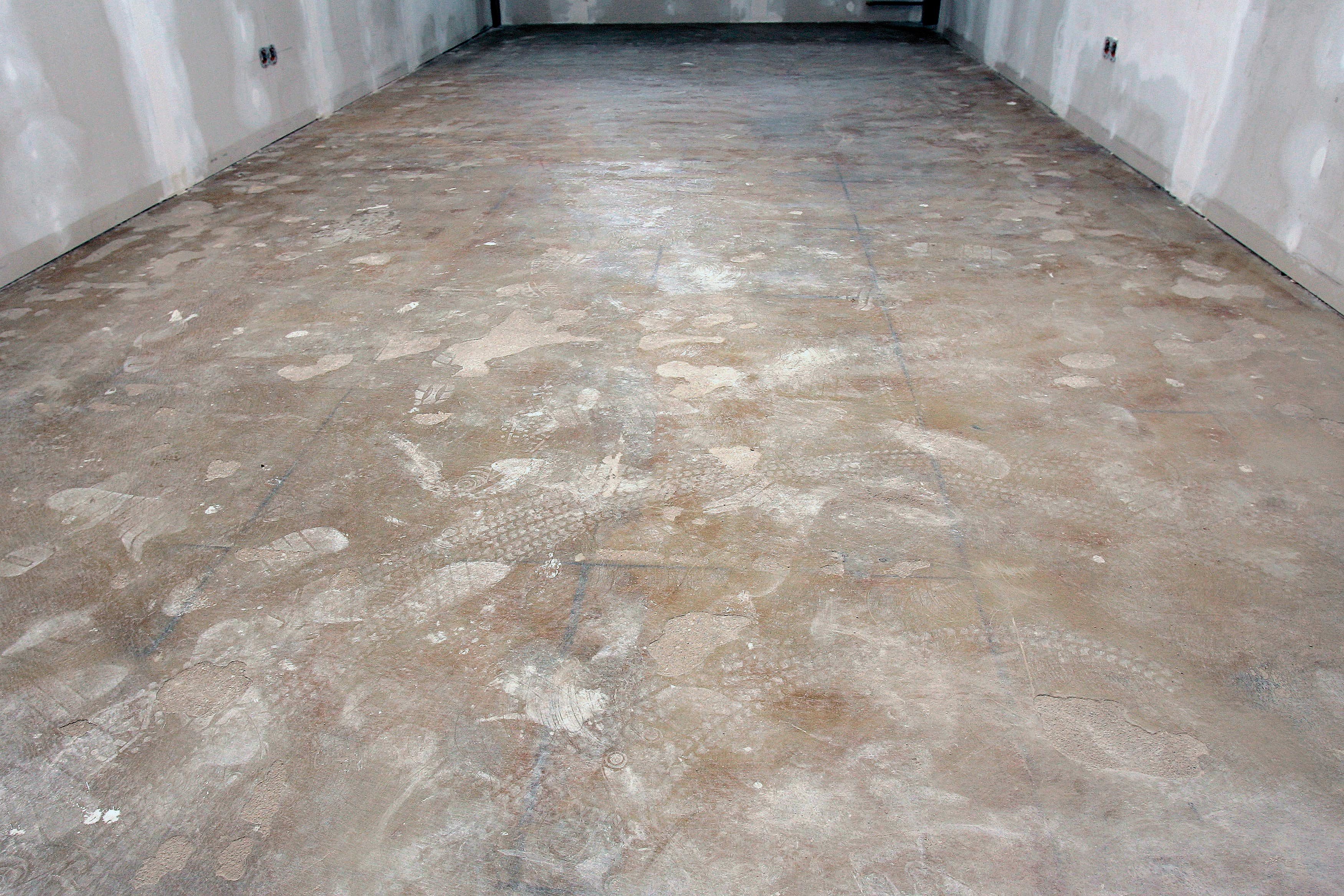
Old wearing surface
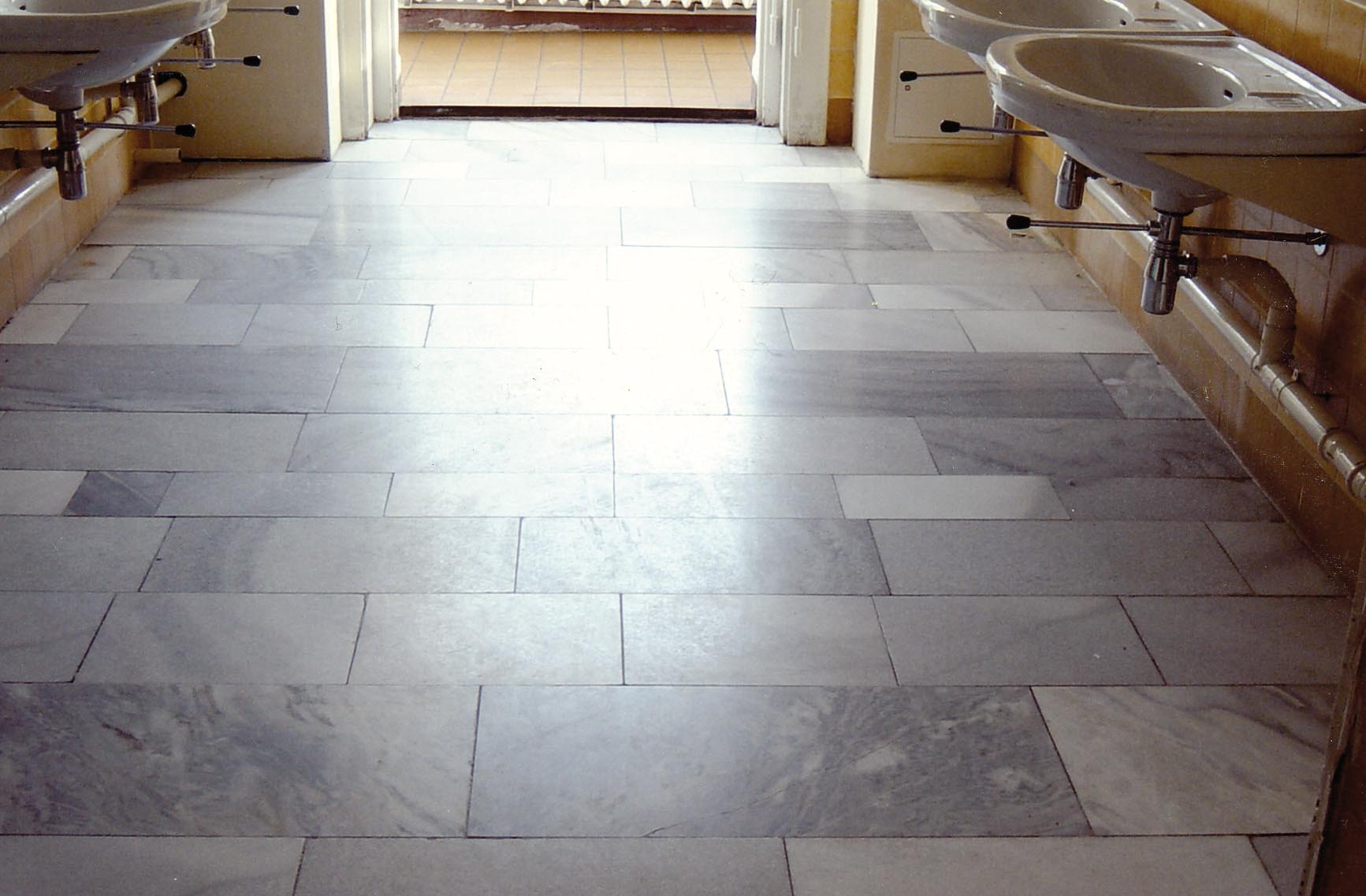
- Cement screeds
- Calcium sulfate screeds / calcium sulfate flow screeds
- Asphalt screeds (mastic asphalt, rolled asphalt and others)
- Magnesite screeds / magnesium oxychloride screeds
- Concrete
- Dry constructions
- Chipboards / OSB boards
- Floorboards
- Plasterboards / gypsum fiberboards
- Dry screed boards
- Raised floors
- Ceramic tiles / stone floors
- Coatings (EP, PUR, PES and others)
- Metals
- Others
Each of the subfloors listed above has certain characteristics that must be taken into account when preparing or renovating the floor.
In addition, it is necessary to consider the residues of old floor installation products like dispersion adhesives, synthetic resin adhesives (for parquet and textile flooring), neoprene adhesives, sulfite lye adhesives and bitumen mastics – to name only the most important ones. There might also be the remains of various old levelling compounds.
